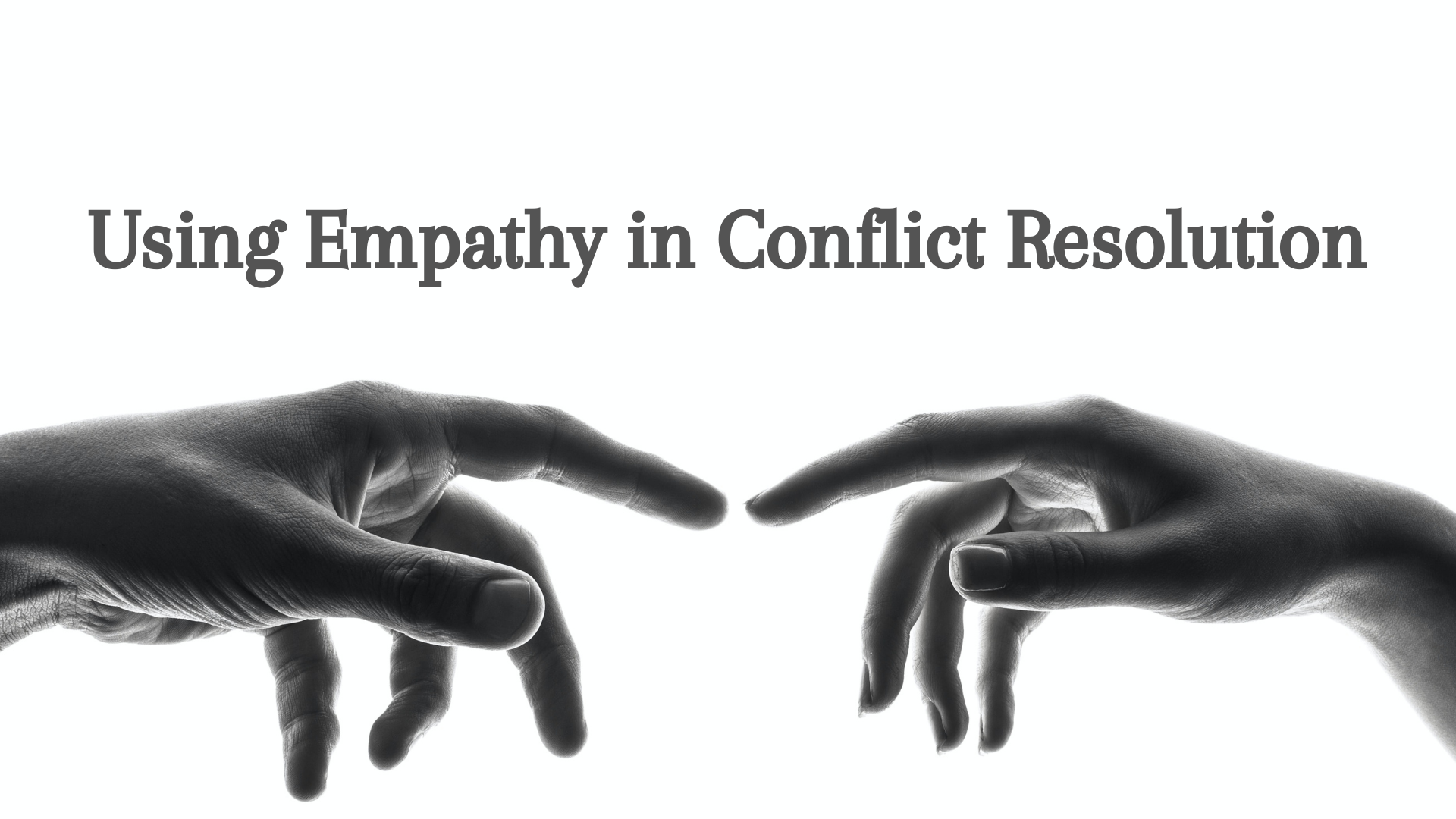Why Speeches, Sermons, & Lectures Don't Work
/Verbal rhetoric, the myth of transformative information, & better communication.
Article originally appeared on Medium.com
Summary:
Verbal rhetoric such as public speaking is useful but has limitations. This communication is great for goals and inspiration but does not produce behavioral changes. This is the myth of transformative information.
Transformative communication requires more than speaking. Why do we prefer verbal rhetoric, what culture is produced as a result, and what else should we try to do?
Introduction — What is Verbal Rhetoric?
Before the assertive antagonist makes their mark, I’ll admit: This title is not technically true. Verbal rhetoric and the act of speaking may work. It just depends on your goal.
Though the history of language and its origin is verbosely debated in academic circles, there is a reason that speaking is the most ubiquitous tool for the human species — it makes communication and, therefore, life easier. Yet, language and communication in general have a vast array of types, dynamics, uses, and functions. Verbal rhetoric is just one and, of all the ways we can communicate, it passes information better than any other. It is direct, it creates shared knowledge within shared meaning, it is the least ambiguous, and it is relatively efficient (most of the time).
So, if the communicative goal is to transmit information, speaking is the right tool. It works.
Even further, within the modern format of speaking, this communicative tool can accomplish another goal because information is valuable for the meaning-making process that us enlightened humans desire: Ideation and inspiration. Information gives us tactile means of processing the unknown world and creating ideas. Transmitting cognitive material can create internal conceptualization.
Hence, rhetoric often is used as a method to inspire us. It doesn’t just put something in your head, it creates something in your mind. Verbal rhetoric between persons can change how you see the world because it adds something to your cognitive map that wasn’t there before.
However, this may be where the benefits stop.
Because though verbal rhetoric may change how you see the world, it doesn’t change how you live in the world.
The Ineffectiveness of Speech
When it comes to learning, offering orientation toward goals, or understanding the abstractions occurring all around us, speaking is great. When it comes to catalyzing that information or those goals, it comes up short.
Much can (and will) be said about religion within this scope because, as it goes, religion has high stakes in the communication game and is a clear example of the issue at hand. Consider the notion of why some religions became belief-oriented. It is easier to accomplish the goal of belief within the confines of verbal rhetoric. If all we have to do is think a certain way, then we can purely rely on a communication tool that is simpler to produce. An outcome of this is that many folks who have a religious disposition are quite adamant about ideas while having questionable actions. The proverbial hypocrite.
This is not just a religious reality, however. Popular culture, identity politics, and the conspicuous brands of well-marketed public spokespersons utilize the same process: produce content that transmits information with the veneer that how we think is enough. We flock to TED Talks, podcasts, and content platforms to feel inspired, be satisfied by information, and justify doing little else than ideation. No wonder verbal rhetoric has become the dominant form of communication.
Yet, while verbal rhetoric accomplishes providing what we think about, it is ineffective in getting us to do anything. Within the lens of Goals, Plans, Action Theory, verbal rhetoric can provide a goal and possibly inform a plan, but action is what actually causes lived change. Behavior requires a shift in perspective — which information can promote — but making the actual transition of change requires more than good ideas. What would happen if a sports coach only gave rousing speeches or limited the coaching to talking about schemes? Ideation and execution are very different things.
Essentially, where verbal rhetoric fails is that a speech, a sermon, a lecture, or even a conversation or business meeting can transmit information and provide what we think about it, but it cannot move the information from our heads to our hands.
Verbal rhetoric is a great information tool but an ineffective ethical tool.
The Sermonic Case Study
The best case study for this topic may just be the modern Christian church and its use of sermons. It also happens to be a culture where this topic would be quite useful. What is evident in the situation of sermons is a common example of verbal rhetoric’s complications that can inform how we approach any other speech act; especially because the presumption of sermons is that it is primarily intended to produce ethical behavior. These speeches are intended to form people and communities.
The modern Christian church also happens to be in a situation of reconsidering its current processes. A lot of this, in my opinion, is because certain ways of doing certain things became associated with the foundational purpose itself. The synonymous association, for example, of a church building and a church or of music and worship slowly funnels the essence of the movement into one, rigid version. Unfortunately, from a communication perspective, Christianity had a very effective method; until it became narrowed into one version that embodies the ineffectiveness of verbal rhetoric.
Enter the communication tool called a sermon.
Preaching and sermons are different things in that one is a category and the other is a type of that category. You wouldn’t know it by how interchangeable the terms have become, however, the modern form of a sermon is just one form of preaching as a whole. A modern pop-culture Christian from the United States would probably be quite perplexed upon entering an Eastern Orthodox church service and possibly aghast upon witnessing an early church gathering. Where’s the music? Where’s the sermon?
This accusation brings up a barrier to this conversation in general. The norms we are used to become so engrained that they tend to leave us jaded to the larger scope of the world around us and the history before us. Egocentric myopia causes us to think that what we are used to is the only way to do it. If we are used to something, we assume its preeminence as we enclose ourselves in the sociological dilemma of using consistency to survive in an ever-changing world. No matter the limitations of your experience and the smallness of your perspective. Yet, being rooted and growing go hand-in-hand and if we only use our limited eyesight in the present, we stifle our imaginations and disconnect from what led us to where we are. Alas, we can only move forward by looking backward — which also reveals that what is common to us is simply one manifestation of a vast, diverse subject.
In the case study of sermons, looking past our own, limited purview of the common church service opens up vast depth. The two-fold model of church gatherings that culminate with a particular type of presentation monologue from a person in a pulpit or a stage is a contemporary invention that is fairly new and largely absent in history. The revivalist movements of the 18th and 19th centuries provide the origin of the style; which also happened to occur within the highly emphasized belief culture of religious fanaticism during the scientific revolution in Europe. By the 1900s, the sermonic golden age had come to the now-familiar format we assume. There were homiletics classes teaching the art and pastors were now expected to be talented public speakers. Honestly, I’m guessing that the first teaching pastor — whose only job was to give sermons — was hired in the 20th century.
Modern evangelical Christians in a Quaker meeting would probably be quite unnerved. Why are they just sitting in silence? As it goes, a Quaker meeting has no sermon. It does, however, have lots of preaching — just in a communication format we might not expect.
Because preaching, in contrast, was always understood more generally than a specific kind of speech act. To preach, in the Christian tradition, was to spread the good news and enact the teleological ethic called the Kingdom of God. Jesus, for example, only gives a couple of sermons (that happen to be quite long). However, in the recorded narratives of the New Testament Gospels, Jesus is constantly preaching. Confronting public officials, healing the sick, feeding the masses — the art of preaching abounds even though Jesus rarely utilizes the rhetoric of a sermon. This also implies that Jesus was a communication scholar because one of the central principles in communication is that rhetoric does not change people, experience does.
The emphasis on the sermon, therefore, might not be a great representation of the religion’s ethical intent, the original meaning of preaching, or the capability and incapability of certain communication forms. For a speech act that is relatively ineffective, modern Christians put quite a bit of technological and production energy into its reverent elevation.
So, why is this a problem, and what should be done instead?
The Myth of Transformative Information
Every box of cigarettes has a warning of what will happen if you partake in its substance. The doom is clear. Yet, very few people have quit smoking because they read that label.
Why? Because information does not change people.
This is the emphasis of the Goals, Plans, Action Theory mentioned earlier. Information and rhetoric are certainly powerful, but they are limited. The same is true of the Transtheoretical Stages of Change. Something is needed beyond the cognitive idea to produce actual effects in lived reality; to move the information from our heads to our hands. If information was all that was necessary, becoming a millionaire with six-pack abs would only require a simple mental exercise of thinking it into existence. Yet, many a to-do list, goal sheets, and New Year’s resolutions sit unscathed in the vacuum that is ideation without execution.
The Limitations of Ideas
Let it be on record that information does play a role; a necessary role, even. It’s just not the end game. Philosophy and ethics, theory and practice — these are dance partners. We need to have a map and we need to travel. Verbal rhetoric and information make for great cartography and inspire the notion of traveling through life. They just don’t actually take us there. However, if you had to choose one — whether to be a cartographer or a traveler — well, the whole point is to go. Traveling without a map can be inefficient, but having a map without traveling makes the map useless.
The first issue is that ideas are just that, ideas.
The Phenomenological Issue
Phenomenologically, we could explore this issue, as well. Phenomenology deals with the complicated nature of human consciousness. It captures our primary understanding of the world through our direct experience of the world. We only have what we know and we only know what we can see.
Verbal rhetoric, again, plays a role in what we see and know. It transmits information; albeit abstract, cognitive information. It does not, however, contain the entire experience. Capturing every component of the human experience involves utilizing all of the elements of the human experience.
The second issue is that our very perception of reality involves more than just information and is primarily shaped by what we experience.
The Problem of Encoding & Memory
Further, we could inquire how we come to know things at all. Well, let’s take another swing at information. Some cognitive-behavioral research indicates that in order to internalize verbal information, we have to hear it consistently thousands of times. The reason deals with memory and encoding.
Now, it is questionable as to whether rhetoric can effectively transmit information at all. How many sermons, for example, have been left to stagnantly float amongst pews? The reason that most information from verbal rhetoric is left behind is that it doesn’t get encoded, and encoding content from sensory memory to short-term memory to long-term memory is an incredibly complicated and arduous task.
A unique issue with encoding failure when it comes to information comes in the form of confirmation bias. Quite literally, we sometimes don’t want to encode things we hear or learn. This is why I stated that information transmission doesn’t tell us what to think, it tells us what to think about; because you can’t force someone to change their mind.
Consider a belief, statement, or perspective that you adamantly hold to. What would it take to change your perspective on that subject? Or, consider how many people have changed their stance on an issue due to a well-written social media meme. Humans tend to hold tightly to what they know, especially if it is associated with their identity. We’re not defending an idea; we’re defending a component of how we see ourselves within the world. We also, because of phenomenology, tend to assume that what we know is all there is to be known. Sometimes referred to as amathia — intelligent stupidity — we fail to explore because we think we’ve already arrived. Therefore, we simply engage with the world while holding a metal detector for all incoming information. Because of the abstract quality of information, it doesn’t necessarily add anything to our perspective. Just another reason that information is relatively ineffective in the journey of actual transformation.
On the other side of psychology, we still have the issue of memory. We pick up all sorts of information in our sensory memory. Sometimes, we get that into short-term memory. But encoding to long-term memory takes a ton of work, and it usually takes longer than the average length of a normal speech. I believe this is why most media have evolved to short content — we’re aiming to captivate that sensory and short-term memory; which simply guarantees that no long-term encoding will happen and now we have less quantity and less quality information to work with. Relying on information alone to alter reality is asking it to do something it isn’t fit to do. Encoding failure should be one of the key reasons we shouldn’t revere verbal rhetoric. Further, as you probably could’ve guessed, one of the key ingredients to encoding information to long-term memory is, of course, the actual lived experience of those ideas existing in reality.
Whether ineffective transmission, the amathia of the ego, or the complexity of encoding — information just isn’t transformative.
And in the end, it’s only information.
Putting Rhetoric in its Proper Place
Verbal rhetoric that transmits information is a helpful role-player, but it is more akin to the garnish of a meal, a map for a journey, or a key for an engine. It’s useful, but on its own, it’s meaningless.
Ultimately, this verdict comes together with one primary component — transformative information is a myth because information lacks the one factor that is responsible for transformation: experience.
Whether from epistemological philosophy and how we come to know what is true, the notion of phenomenology and the essential role of experience in perception, the tactile nature of experience that promotes encoding, or the biological and neurological necessity of experience in any process of change — experience is essential and verbal rhetoric fails to transcend the limited quality of transmitting information.
Transformative communication, therefore, is going to require more than speeches, sermons, lectures, and the like.
Transformative Communication
There are a couple of key dynamics that make for constructive communication in light of the myth of transformative information. Simply considering the science and art of learning reveals that speaking shouldn’t be given the credence our society does.
David Kolb might have the most holistic explanation for this in his humanistic and constructive approach to education. He proposes four stages of learning based on Jean Piaget’s work that explores how the role of experience affects any process of becoming. The details deserve their own attention, but essentially, there are four angles to learning and four types of learning that all incorporate different sensory and psychological attributes. One common theme in every type, however, is engagement — the presence of the whole person physically, mentally, and emotionally participating in what is happening.
The crux of Kolb’s work is that all these angles and types are necessary for transformation. Experience, observation, conceptual processing, and active interaction all stimulate various modes of being that are necessary to learn. Hearing someone speak is but one suggested piece in the multilayered puzzle.
When you take all of these issues within the human mind, two clear components to the process of becoming are engagement, as already stated, and context. That’s what experience makes possible and what monologues are terribly unfit for.
What, then, should we do instead?
If you’re going to still use verbal rhetoric — which, as we said, is still part of the deal — there are a couple of techniques to mitigate these circumstances.
(1) Acceptance
Put the rhetoric in its proper place and be honest about what it is capable of and isn’t capable of. Of utmost importance is realizing that the information being transmitted cannot be the whole process. You’ll have to mitigate its shortcomings. Give verbal rhetoric, but know that you’re going to need other components for encoding, phenomenology, sensory experiential learning, and practical action steps in developing habits.
(2) Extemporaneous Dialectical
This is a public speaking technique that accomplishes two of the elements of experiential learning while still using verbal rhetoric: engagement and responding to context.
This is essentially a combination of conversation and impromptu teaching. Interestingly, if we might harken back to the sermonic details, this is how Jesus typically interacts. Consider the difference between a coaching conversation with a client and a pre-recorded speech sent to someone via email; which one is more effective?
Extemporaneous is speaking, teaching, or conversing without formal preparation. Improv comedians and actors do this best. There is still preparation. You’ve developed content and honed skills and messages, but it isn’t strictly tied to an outline or notes. It can respond to the given context. In this, no two acts of verbal rhetoric are ever the same because they adapt to who is in the room.
Dialectical is the opposite of a monologue — it is a dialogue. This is when a speech is seen as a conversation (even if the feedback communication is non-verbal). It engages the people in the room.
(3) Multi-layered Communication
This actually just follows the advice of any basic public speaking or homiletics class: use various forms of communication. Hopefully, however, we now see why this is so necessary. It isn’t just about using a story to platform your thesis or working in illustrations to prove your point or captivate the audience. This is simply about utilizing as many senses, types of learning, and modes of communication as you can; especially non-verbal communication. More modes equal more experience.
Ideally, all three of those suggestions would be utilized together in any public speaking environment.
Transcend the Speech
What is the difference between being a student and being an apprentice? In accepting the shortcomings of verbal rhetoric, we need to fill those gaps with actual experience. The education world is doing a much better job of this but it is still often limited to the constraints of a classroom and school day hours. Being a student involves a static transmission of information. Being an apprentice also involves information, but implies a multivarious approach to learning the trade.
Consider, if you want to know how to love someone, what is the best way? You can read articles or listen to speeches, or you can go on the daily journey of doing it. As cliché as it sounds, we learn by doing. We transform and grow by firmly rooting our hands in the dirt of life. Or, even more generic, practice makes perfect.
It’s not just doing, however. Observation, exploration, reflective processing, and immersion in environments that pertain to learning are all experiential components that run in tandem with active doing.
Whoops…
At last, as I end this diatribe, there is an issue you may have recognized. I only gave you information. I didn’t use helpful graphics nor did I subsume the information with many stories or illustrations. This wasn’t contextual or dialogical.
I utterly failed to take my own advice.
Which means I’ve only started the conversation.
I literally just gave you a bunch of information about the ineffectiveness of communicating information. You must decide if you will take it to its practical manifestation.
As with all learning, communication, speeches, sermons, or lectures, you still have to do something with this information if it is to actually lead to something.
Only you, the receiver, can truly move information from your head to your hands.
Be honest about the myth of transformative information.
And see the possibility of the transformative kind.











![Three Reasons We're Lonely - [And Three Responses For Being Less So]](https://images.squarespace-cdn.com/content/v1/5963d280893fc02db1b9a659/1651234022075-7WEKZ2LGDVCR7IM74KE2/Loneliness+3+update+%283%29.png)





























